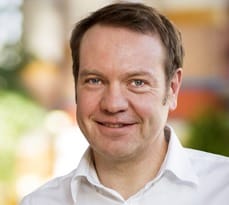Competing demands can sometimes hamper your ability to make the right decision, but new research suggests there may be a better way.
 When the Keystone Development Trust, a social enterprise in the East of England created a programme of support for migrant workers living locally some years ago, some members of the local population reacted badly. The hostile reaction was based on discontent at what they perceived as “their” resources being directed at “foreigners”.
When the Keystone Development Trust, a social enterprise in the East of England created a programme of support for migrant workers living locally some years ago, some members of the local population reacted badly. The hostile reaction was based on discontent at what they perceived as “their” resources being directed at “foreigners”.
This posed Keystone a major strategic dilemma: by continuing to invest resources supporting the migrant population it risked undermining its local legitimacy and commercial viability, but by withdrawing support for the migrant population it risked undermining its core mission – supporting marginalised people – and sense of purpose.
This strategic conundrum represents perfectly the classic case of competing demands hampering an organisation’s ability to make choices. And the study of strategic decision-making in these circumstances has over the past few years been based in two camps: paradox theory, which treats these obstacles as a part of organisational life and as opportunities to embrace, rather than issues to resolve; and institutional complexity, which views them as challenges that stem from the broader social context in which organisations operate, and which are to be worked around, negotiated, or minimised.
From an institutional complexity perspective, Keystone’s dilemma represented a significant strategic bind – a tension rooted in community dynamics and media “hysteria” about migration – that it could do little about. From a paradox perspective, however, it could be reimagined as an opportunity, because Keystone was able to use the situation as way of affirming its core identity as a social purpose organisation and to build relationships with other local organisations facing similar issues.

But according to Cambride Judge Business School’s Paul Tracey, Professor of Innovation & Organisation and Co-Director of the Cambridge Centre for Social Innovation, there’s also a third way, and that’s to combine the two. “A paradox theory lens focuses on dualities – demands on organisations which are in opposition but also interdependent,” he says. “Take, for instance, success and failure, which paradox theorists view as inherently paradoxical and a core organisational dynamic. When an organisation comes to be seen as successful, the likelihood that it will be viewed as a failure in the future increases, while failure often provides the impetus for future success. For example, each time Apple takes a major step forward with an iteration of the iPhone, it raises expectations that each subsequent iteration will be equally significant. At the same time, a new model that is perceived as a disappointment acts as a source of motivation to break new ground in the future.”
In contrast, an institutional complexity lens highlights that many competing demands are rooted in the competitive environment in which organisations operate, and specifically the divergent expectations of stakeholders. “From this standpoint, navigating complexity is about trying to negotiate around these demands, compromising and making sense of them,” he says. “If we think about success and failure from an institutional complexity perspective, the emphasis is on the socially constructed nature of performance expectations. Investors, customers, employees may all have differing, and possibly contradicatory, views on what constitutes success and failure, which can pull organisations in different directions. But our research has made us come to realise there are synergies between these two theoretical lenses and you can actually combine them.”
In his research paper “Complementarities of competing demands”, co-written with Dr Wendy Smith from the University of Delaware, Professor Tracey suggests both approaches have value and both can complement each other in a number of ways. “Each competing demand has a different emphasis and effect,” he says. “Paradox theory assumes every organisation embeds competing demands, yet the position of the organisation within its societal environment, and its relationship to other actors, profoundly influence the experience of these demands. Paradox theorists can use institutional theory to understand the impact of the environment on how tensions are experienced in organisations.”
Similarly, he says, institutional theorists can draw on a paradox lens to explore new approaches to addressing strategic tensions and consider how these evolve over time. “Institutional theory tends to view organisations as quite constrained in their options for dealing with competing demands – because it views these demands as rooted in the competitive environment, they are assumed to be relatively fixed. By contrast, paradox theory highlights several approaches to managing competing demands, including embracing them rather than trying to avoid or minimise them.”
So where can combining the two lenses make a significant difference? “Taking a dual approach could be particularly effective when we are concerned with societal issues rather than only organisational ones,” says Professor Tracey. “It’s very apparent that tensions and contradictions become particularly acute when addressing ‘grand challenges’, issues such as climate change, the depletion of natural resources, inequality or discrimination. Organisations lie at the heart of these issues, often being both part of the problem and fundamental to the solution.”
In Keystone’s case, this meant analysing the competing demands inherent in such complex organisational and social problems using the lenses of both paradox theory and institutional complexity and applying both to press on with its original plans. “So it used institutional complexity to make sense of the tensions between various actors and agencies, and paradox theory to help those actors and agencies to understand their relationship with each other and develop strategies for action.”
According to Professor Tracey, understanding how the two divergent theories can complement each other – and how organisations can both exacerbate and solve such major issues – is an engaging incentive for the theorists of this and future generations to make a seismic impact on the future of our planet.
“As our world continues to be more global and integrated, long term success will increasingly depend on an organisation’s ability to address competing demands,” he says. “Although institutional complexity and paradox theory offer apparently opposing approaches to competing demands, together they can provide complementary insights.”
Which is vital, for decisions, whether on a global or local, environmental or institutional scale, keep the world turning. As former US President Franklin D. Roosevelt said: “In any moment of decision, the best thing you can do is the right thing, the next best thing is the wrong thing. And the worst thing you can do is nothing.”

